
Review on WiFi router TP-LINK Archer AX73, black by Eduardo Costa

Good, imperfect, misunderstood
Let's go!
TPLINK or Mercusys are medium/low cost brands with compatible performance for most products.
Often the advertising is exaggerated, it is not a lie, but the advertising is enough to make people believe that they have magical products.
In general there is a lot of discontent due to the confusion between One-Mesh and Mesh. One-Mesh is a TP-Link technology compatible with some repeaters in the TP-Link One-Mesh family, it is not the standard Mesh that we find in Deco, Cube Mesh or Google Mesh. OneIMesh is a simplified version of Mesh repeater technology that only works for a few One-Mesh products. This description has improved on the TP-Link website recently, but for a long time there was a lack of a better explanation about it.
Having said that, AX73 is a One-Mesh Router.
Regarding heating, there are two faults: user and TP-Link. This type of cabinet only provides good convection if it is fixed to the wall. For lighter processors, placing them on a table or rack may not be a problem. For the AX73 under high workload, it is mandatory to use it mounted on the wall, so that the colder air enters from below and escapes from the sides. The source is not strong enough, as soon as it exceeds 800mA of current, a vicious circle begins, the DC voltage drops and to maintain the power factor, it consumes even more current. I fixed it to the wall, with good space among other things, replacing the DC 12V 3A power supply. No heating issues, resets or interruptions.
I use 80 IoT devices, 12 Full HD IP cameras, 1 NVR recording the 12 channels, 3 Smart TVs, 2 Android Box for Video Monitors, 2 Cell Phones and 2 Notebooks. All with MAC filter, ARP and IP Reserved by DHCP. There are also 4 more routers throughout the 300m2 (3,200 square feet) of the house.
3 routers are as access points, to guarantee a high level of Wi-Fi signal. The basement of my house has magnetite, I am 1 km (0.6 miles) from 3 cell towers, 2 km (1.24 miles) from radio stations AM and FM and 4km (2.5 miles) from 14 TV stations. There is no shortage of electromagnetic interference here :-) . These routers are spread out to ensure a good Wi-Fi signal level, allowing me to access home automation when I'm 100m (330 feet) from the garage door and when I'm in the car.
As the table of entries for MAC, ARP and Fixed IP are limited to 64 devices and I have almost 100 clients in the house, there is a router in the subnet for some devices just to complete the clients that the AX73 cannot register.
Finally, in addition to recording images from the 12 cameras to the NVR, all FHD recording is done in the cloud and I use a pen-drive as a Samba media server.
In other words, except for games, the AX73 works very hard. And remember, I'm in Brazil, in a city known in the region for its high temperatures.
If it is subjected to heavy work, it needs to be on the wall for correct convection (TP-Link doesn't make this very clear in the manual) and the DC source isn't enough (TP-Link made stupid savings).
But there are other problems: The cache is not well cleaned, the firmware could be better in other aspects. A daily restart is necessary, it hasn't happened to me that it restarts during the day, but after about 18 hours of work it starts to lose speed. I adjusted the automatic restart time considering this. The last 3 firmware upgrades improved this, but there was still work to be done.
The ARP table binding list has user interface flaws. White is a device not connected to the network, Gray is connected but not transmitting, Blue is connected and transmitting. If Air Time Fainless is active, the status is updated at the time of the scan, disregarding that the device may not be occupying the Wi-Fi signal band at that moment, but was a fraction of a second ago. Air Time Fainless uses non-transmission intervals to fit other signals. The client list has the same problem.
AX73 As Brute Force is a good router, but it came out full of little buggy items that can be a big hassle if not worked around.
My big disappointment was the quick discontinuation of this model. There are still things to improve in the firmware and the AX72, its poor cousin, manages to match its performance for one of the items at a time. With AX72 it is not possible to achieve, at the same time, a large number of users (more than 60), complex configurations (ARP, MAC Filter, Samba, Routes, Triggers), Large Data Volume (350 MBits/s or more). With AX73 you can achieve two of these things at the same time. If you need all 3 things at the same time, well, look for another category of router.
- Hard Worker
- Several Issues
New products
Comments (0)
Top products in 📶 Wifi Routers
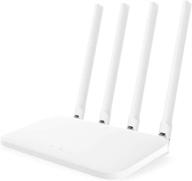
Experience Faster and More Stable Internet with Xiaomi Mi Router 4C

103 Review
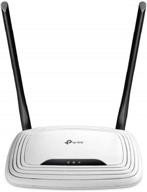
📶 Boost Your Wi-Fi Signal with TP-Link N300 Wireless Extender and Router - 2 High Power Antennas, Access Point, WISP, 300Mbps

216 Review
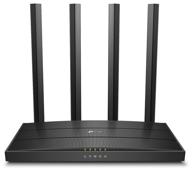
WiFi router TP-LINK Archer C6, black

102 Review
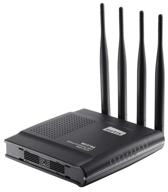
Wi-Fi router netis WF2780, black

111 Review
Another interesting products

🔌 CERRXIAN RS232 to Ethernet Serial Device Server - TCP/IP Converter with 1Port DB9 RS232 Serial to Ethernet Connectivity

3 Review
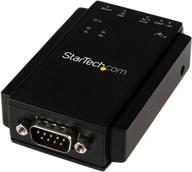
🔌 StarTech.com NETRS232 Serial to IP Ethernet Device Server - DIN Rail Mountable - Serial Device Server - Serial Over IP Device Server (Black)

4 Review

🔌 Juiced Systems Silver BizHUB USB-C Multiport Gigabit HDMI Hub with 3 USB 3.0 Ports, Gigabit Ethernet, 4K HDMI, SD/Micro SD, and USB-C Power Delivery

11 Review
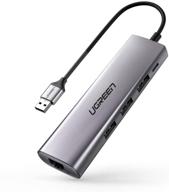
UGREEN USB 3.0 Ethernet Adapter Hub with RJ45: Fast Gigabit Ethernet Converter, 3 Ports USB 3.0 Hub Compatible for MacBook, iMac, Surface Pro, Chromebook, Laptop, PC

11 Review


